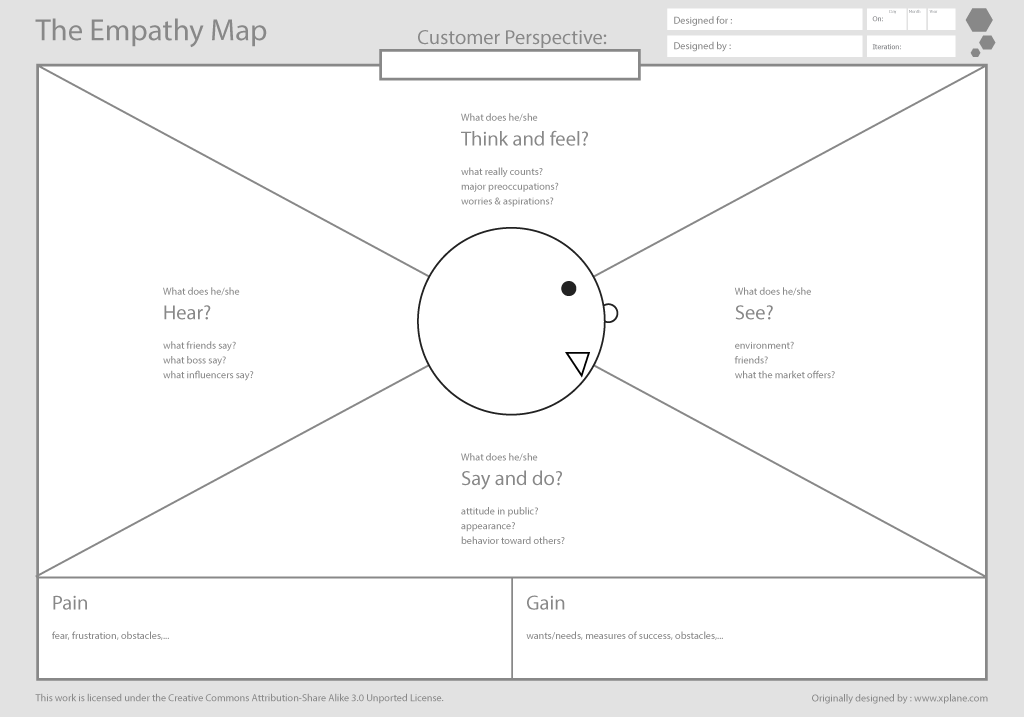Jim Semick of ProductPlan recently blogged on being an empathetic product manager. It is excellent advice that is Product Management 101. A few years ago, I had the opportunity to engage with leaders from the d.school at Stanford. I’d encourage you to read their methods and you’ll read about a strong focus on empathy. They have amazing stories about how approaching a problem from a position of empathy can lead to an improved and even potentially transformative outcome.
Not always better being in others’ shoes
Yet with all this talk about empathy, I stumbled upon an interesting article in the Harvard Business Review. They recently published this article on the perils of being empathetic as a means to predict customer desires. Their experiments concluded that empathy led to a more “egocentric” perspective — essentially people chose what they wanted or felt instead of what the user or customer actually felt.
Get Real Data
One technique that I’ve used in the past is an empathy map. You’ll see it listed among the d.school methods, and other Agile thought leaders advocate for its use.
Yet, ironically I’ve witnessed a lot of the “egocentric” behavior while completing empathy maps. It’s easy for teams completing these maps to simply “guess” what their customer is thinking, feeling, seeing, or hearing. If you have a team of five people completing an empathy map, how many have actually spoken with a customer? How many folks have asked a customer to describe their day in detail? How many people have recorded their mannerisms and expressions while answering the questions? I’ve had people on my team that spend hours interviewing customers to get this data, but in my experience, it’s rare to have a product manager that spends a lot of time here. Product Managers are busy, and this is an easy area to take a short-cut. It’s much easier to simply ask yourself “what do I think my customer is thinking?” Sadly, this is code for “what do I think” and leads to the egocentric decision-making described by the HBR article.
To me, empathy isn’t a perspective or approach to decision-making — it’s an approach to data collection. Empathy is powerful when interviewing customers and soliciting feedback. Jim’s blog post contains many tips on how to approach interviews with empathy that help improve the data that’s captured. The key is that simply ‘being’ empathetic isn’t a replacement for doing the hard work and speaking with real customers to collect data. That data can then be synthesized with other data to inform a decision.





